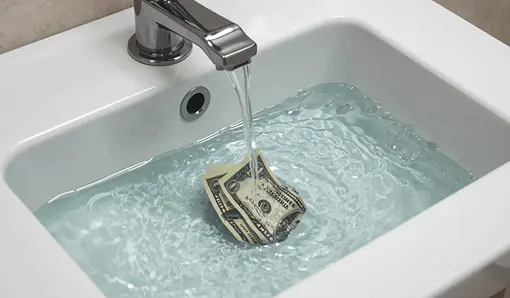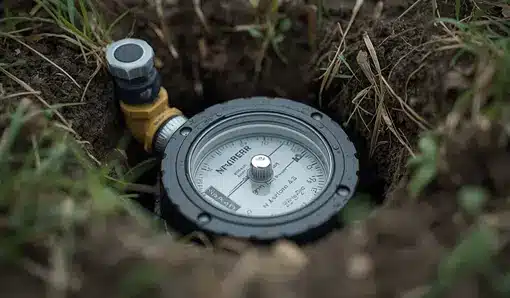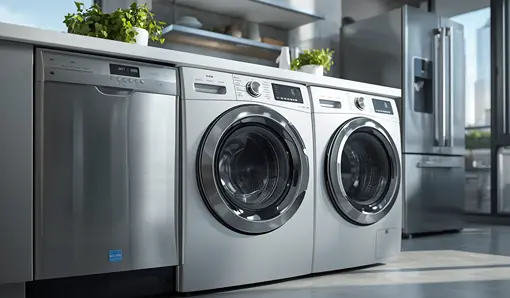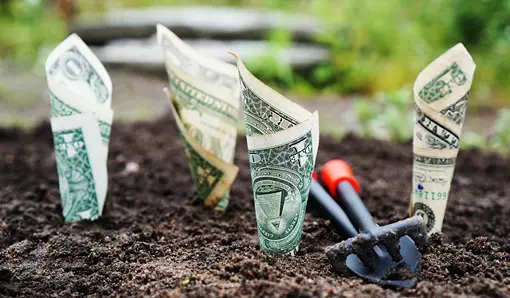Intro
Ever open your utility bill and nearly spit out your coffee? You’re not alone.
The average American family spends over $1,000 a year on water and sewer services per the EPA. And when bills spike unexpectedly, it feels like money is just pouring down the drain.
If you’re wondering why your water bills are so high, there’s good news: you can figure it out pretty easily with a little detective work and cut some unnecessary costs along the way.
In fact, simple lifestyle changes around using water could save you over $500 per year, and if you have a leak causing high water bills, that figure could be far greater.
Let’s dive in and see how.

Can a Running Toilet Increase Your Water Bill?
One of the biggest causes of high water bills is a continuously running toilet. It’s like leaving your garden hose on full blast — and it can waste hundreds of gallons of water a day.
That’s like flushing an entire swimming pool down the drain every month!
At an average cost of 1-2 cents per gallon for water and sewer, that’s $60–$120 per month if left unchecked.
I’ll never forget when the guest bathroom toilet flapper wore out and started leaking water into the tank. We didn’t notice right away, and it ran up our bill for months.
Solution: Check if the toilet is your problem.
Drop a little food coloring in the back of your toilet tank, wait 10 minutes, and watch for color to seep into the bowl.
If you see any, you’ve got a silent leak.
Go ahead and flush a couple of times now to avoid any staining.
Replacing the flapper or adjusting the chain is usually all it takes, and the best part is that it’s an easy DIY job most homeowners can handle in minutes.
A quick trip to the hardware store for a ~$5 part and a pair of pliers can solve the problem without ever calling a plumber.
If you’re unsure, here’s a great video on how to change your toilet flapper so you’ll feel confident tackling it yourself.

Do You Have a High Water Bill With No Visible Leak?
Sometimes the water is vanishing without a trace. No drips, no puddles — just a painful bill.
That’s because not all leaks show up where you can see them.
If you’ve done the toilet leak test above and everything is clear, consider these issues.
Hidden problems can include:
Underground irrigation lines that leak unnoticed under your yard.
Slab leaks, which are especially common in slab-style homes like here in Florida and can seep beneath the foundation.
Leaky water heater valves that slowly drip without leaving visible puddles.
Even a small underground leak can waste hundreds of gallons per day, which translates to a $25–$50 per month higher water bill.
Solution: Turn off all faucets and appliances, then check your water meter. You can find the water meter where water lines first enter your home:
- For slab homes, water meters are often in an underground box near the street curb. You’ll see the lid from above ground.
- For basement homes, water meters are often indoors on the front wall of the home near the main water shutoff.
Watch the needle on the meter, and if it’s still moving when no water is running, you’ve got a hidden leak.
Calling a plumber might feel expensive, but trust me — it’s cheaper than ignoring it and letting high water bills drain your wallet forever.

Household Habits That Quietly Waste Gallons (and Dollars)
Sometimes the issue isn’t leaks at all — it’s us.
Long showers or running the dishwasher half-full can add up faster than you think.
But those aren’t the only culprits. Everyday tasks add up when done inefficiently.
Here’s an estimate of how much you could save by adjusting the habits below:
Showers: Long or multiple showers a day can waste thousands of gallons a month. In fact, every 1 minute extra in the shower uses ~2 extra gallons of water. (that’s $2 per month, per minute, per person!)
Laundry: Washing only half-loads a few times a week can add dozens of gallons more per cycle. At 20 extra gallons per week, that’s about $2 per month.
Cooking and Cleaning: Running water while scrubbing dishes or rinsing vegetables without turning off the tap quickly adds up. Even 5 minutes a day can waste over a hundred gallons a month — about $3 per month.
Brushing Teeth and Handwashing: Leaving the faucet running while brushing or scrubbing can waste several gallons a day — easily $2 per month.
Pre-rinsing Dishes: Most modern dishwashers can handle dirty dishes without rinsing, so pre-rinsing just wastes water, adding another $3 per month.
Toilet Flushing Habits: Using a full flush for small waste or flushing unnecessary items increases usage by hundreds of gallons annually — $4 per month.
Outdoor Watering: Overwatering lawns during rainy seasons or not adjusting sprinklers can lead to thousands of extra gallons, at least $10 per month.
Pools and Hot Tubs: Failing to cover or maintain them can lead to leaks or evaporation, often costing $7 per month when you have to refill them.
Running Tap for Temperature: Running the tap until hot or cold wastes gallons. If done daily, that’s $4 per month.
The cost from each of these habits might seem small, but when stacked together, they add u quickly on your bill.
By making the changes above, the average person can expect to see their water bill drop by $42 per month. That’s $504 per year.
Not bad for a few simple lifestyle changes!

How Old Appliances Drive Up Your Water Usage
If you’ve already addressed leaks and habits, older appliances and fixtures can also be sneaky culprits draining your water and wallet.
Common sources of water waste can include:
Old washers: A 90s-era model can use about 40 gallons per load, while a modern high-efficiency washer uses closer to 15 gallons. If you do 5 loads a week, that’s 6,500 gallons a year — about $8 per month.
Front load vs. Top load washers: Front-load washers use about half the water of traditional top-loaders, saving around 20–25 gallons per load. At 5 loads a week, that’s $8 per month in savings.
Outdated showerheads: Older models can gush several gallons more per minute than WaterSense versions. Just 5 extra minutes of use daily equals 5,000 gallons a year — around $6 per month.
Leaky faucets: Even a slow drip can waste dozens of gallons each week, easily costing $3 per month.
Inefficient dishwashers: Older units use far more water per cycle compared to today’s ENERGY STAR models, adding another $4 per month.
Together, these outdated appliances and fixtures quietly drain both water and money if left unchecked.
We swapped our washer and dryer last year and saw an almost $20 per month drop between water and electricity.
At that rate, replacing them will pay for itself in just a few years!
Solution: Consider if it makes sense to replace your old fixtures with WaterSense-labeled fixtures and your old appliances with ENERGY STAR ones.
In the next section, we’ll highlight specific high-efficiency upgrades that can help reduce your water bill even further.

High Efficiency Appliances That Cut Water Use
If you’ve ruled out old appliances and fixtures but your bill is still high, it may time to consider some high efficiency upgrades.
The EPA notes the average family could save nearly $400 annually on their water and sewer bills by switching to more efficient fixtures and appliances.
It’s important to determine the payback period for each of these, or how quickly you can recoup your investment.
For some, it may only make sense to do an upgrade when your appliance is already old, or if you’re in an area with excessively high water costs.
Here’s a list of high efficiency appliances and fixtures:
-
Low-flow toilets: Use significantly less water per flush. Dual-flush models let you choose water volume depending on waste, saving $7 per month.
-
Low-flow showerheads: Reduce water flow while keeping good pressure, cutting waste without cutting comfort, saving $8 per month.
-
Faucet aerators: Low-flow aerators mix air with water to cut wage usage without losing pressure, saving up to $16 per month.
-
Smart irrigation systems: Use weather and soil moisture data to prevent overwatering, saving $19 per month.
-
Dishwashers with soil sensors: Adjust water based on how dirty your dishes are, saving $1 per month.
Frequently Asked Questions on Water Bills
The sewer charge is the fee your utility adds for collecting and treating wastewater that leaves your home.
While the water charge covers the clean water delivered to you, the sewer charge covers the cost of carrying used water away, treating it, and disposing of it.
In many areas, the sewer charge is actually higher than the water charge because wastewater treatment is more complex and expensive than supplying clean water.
A water bill is usually based on the gallons of water your household uses during the billing period.
Utilities apply a rate per unit of water, and many also use tiered pricing — meaning the more water you use, the higher the per-unit rate can become.
In addition to the water charge, most bills also include a sewer charge (for wastewater treatment) and sometimes fixed service or infrastructure fees.
The total bill is the sum of these charges, plus any applicable taxes or surcharges.
Water and sewer charges are usually combined on the same utility bill in most areas, since both services are measured from your home’s water use.
The water charge covers the clean water delivered to your property, while the sewer charge covers the collection and treatment of wastewater that goes down your drains.
Most households receive a water bill either monthly or every two months, depending on the utility provider. Some smaller towns or rural areas may bill quarterly.
The billing cycle is set by your local water company, so the exact schedule can vary, but you’ll usually see regular statements that cover your usage for the previous 30 to 60 days.
No, if your home uses a private well, you generally don’t receive a monthly water bill because you’re not connected to a city or municipal water system.
However, you may still get a sewer bill if your home is connected to a municipal sewer system.
Bottom Line
There are multiple possible causes of a high water bill as highlighted above. It could be a mix of hidden leaks, everyday habits, and old appliances.
The good news is, you have control.
Changing your daily water usage habits alone can save the average person $504/yr, and if you have an active leak, finding and fixing it can save you far more than that.
Take it from us: nothing feels better than lowering a bill without significantly changing your lifestyle!
If you’re getting the knack of doing things yourself, be sure to check out our article on how to maintain your AC to save money.
And if you found this guide helpful, don’t let it stop here.
Sign up for our weekly emails in the orange box for more money-saving tips, or share this article with your family and friends using the links at the bottom.
Every share helps more people keep more cash in their pocket — and that’s what Saving Your Tail is all about!
Savings From Changing Household Water Habits
Here’s the math behind how much you could save simply by changing your household’s water usage habits:
Save:
- $42/mo average in water costs avoided * 12 mos
- = $504/yr saved by changing water usage habits with the list provided
Time Required:
- The beauty of this is that many of these habits actually save you time:
- Doing fuller laundry loads means doing less laundry
- Quicker showers, avoiding pre-rinsing dishes, not running the tap until hot/cold all save time.
- But let’s say +30 mins reading this article and putting those habits into practice
Results:
- $504/yr saved
- $504 saved / 0.5 hr
- =$1008/hr savings rate






One response to “Why Are My Water Bills So High? 5 Reasons and How To Fix Them”
10-3-2025
Well written and I plan to follow your advice.
Thank you!